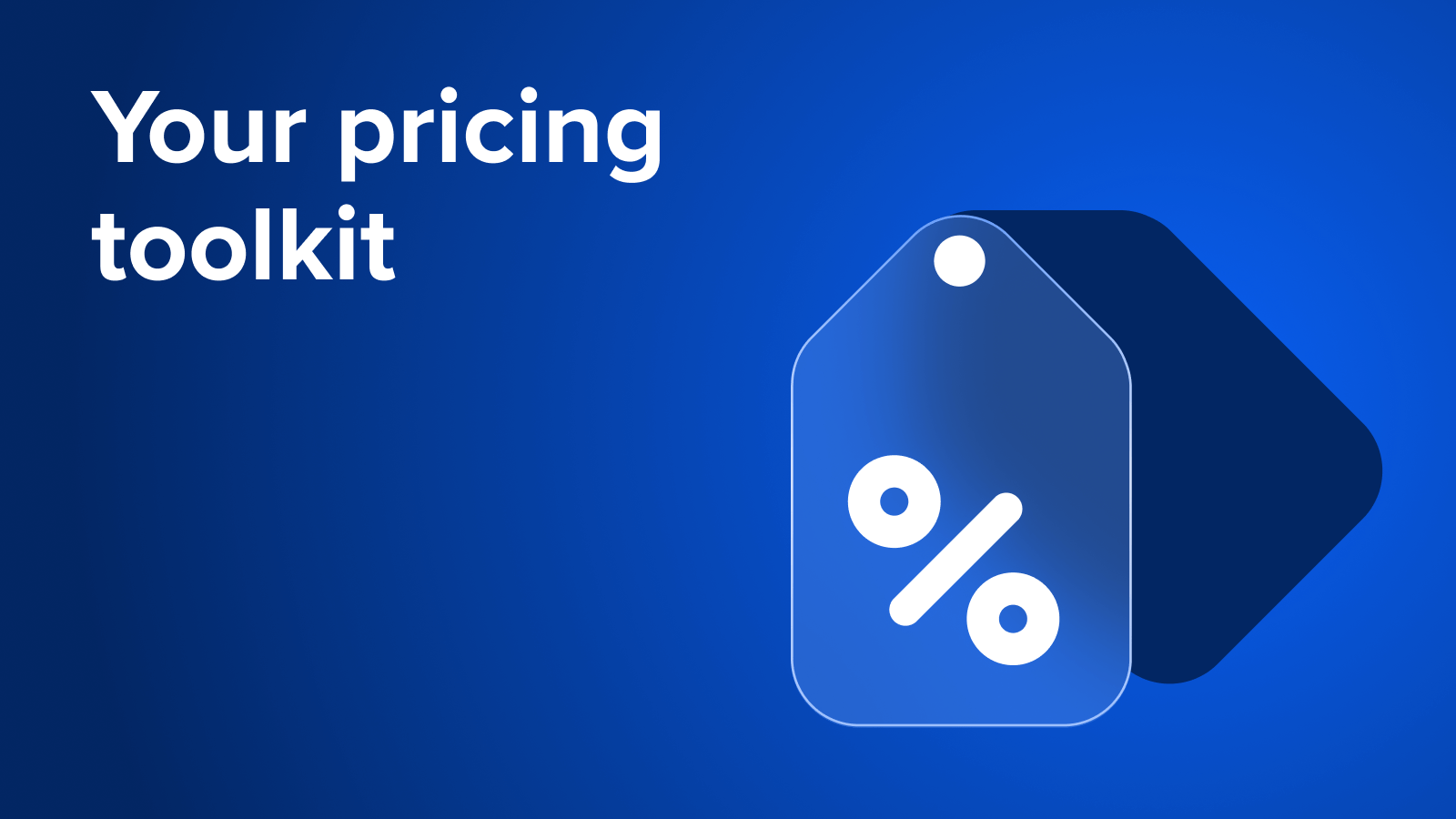How to Open an Indoor Playground: Costs, Profits and Steps to Success

Are you passionate about creating a fun, safe space for kids to play, learn, and explore—but not sure where to start? Opening an indoor playground can be an exciting and rewarding business opportunity, offering a reliable, year-round attraction for families, schools, and community groups.
From finding the perfect location to managing bookings and memberships, there’s a lot to consider. One crucial ingredient for success? Choosing the right playground software to keep operations smooth and your guest experience unforgettable.
Whether you’re new to the industry or looking to expand into indoor entertainment, this guide will walk you through how to open an indoor playground business step-by-step.
What is an indoor playground business?
An indoor playground business is a dedicated entertainment venue where children can safely play, climb, and explore, regardless of the weather. These facilities often feature soft play structures, ball pits, climbing walls, obstacle courses, and themed activity areas. Many also offer additional services like birthday party hosting, classes, and café spaces for parents.
Running a successful indoor playground requires more than fun equipment—it’s about smart planning, safety compliance, and tools like playground management software that streamline bookings, waivers, memberships, and reporting.
Why open an indoor playground?
If you’re thinking about launching a new entertainment business, an indoor playground offers an exciting opportunity. With demand for safe, fun, and active experiences on the rise, indoor play spaces are becoming go-to destinations for families, schools, and community groups alike.
Growing demand for indoor play spaces
Parents today are increasingly seeking out structured, screen-free activities that promote physical movement and socialization. The demand for indoor entertainment options—especially for young children—continues to grow year-over-year. Indoor playgrounds provide a safe, climate-controlled environment where kids can explore, climb, and play, regardless of weather conditions. This positions them perfectly to serve modern families looking for convenient, reliable entertainment.
Year-round revenue potential
Unlike outdoor parks or seasonal attractions, indoor playgrounds can operate all year long. Rain, snow, or heat waves won't shut down your venue—instead, they can actually drive more traffic during bad weather. This year-round reliability not only stabilizes your cash flow but also makes it easier to forecast revenue and plan staffing needs compared to seasonal businesses that experience significant off-peak periods.
Appealing to key demographics
Indoor playgrounds cater to a wide range of customers, including:
- Parents and guardians looking for safe, stimulating activities for young children.
- Schools and daycare centers seeking reliable field trip destinations and enrichment activities.
- Event planners and families booking birthday parties, private events, and group outings.
By tapping into these different markets, operators can diversify their revenue streams and maximize space usage—whether it’s open play during weekdays, party rentals on weekends, or private bookings for schools and groups.
How to open an indoor playground business: a step by step guide
Step 1. Do your research
Before you start building your dream playground, take time to research your local market. Key factors to consider include:
- Demographics: Identify the target demographic for your indoor playground, including age groups, income levels, and family characteristics. Research the local population to understand your potential customer base. For example, is there a large family population nearby? What age groups are you targeting?
- Competition: Study the area's existing indoor playgrounds and family entertainment centers and assess their offerings, pricing, customer reviews, and strengths and weaknesses to identify opportunities for differentiation. How can you differentiate your business from these competitors?
- Market trends: Research current market trends in indoor play and family entertainment to understand consumer preferences and demands. For example, are parents seeking themed experiences, sensory-friendly areas, memberships, or party packages?
Use this research to validate your idea and refine your indoor play area business plan.
Step 2. Create a business plan
Once you've done your research, you can use that information to start to build your business plan, which should give a concise overview of the indoor playground, your vision, your target market and any unique selling points. You’ll also want to include:
- Company overview: Describe your business model, the type of indoor playground, and the experience you aim to create for customers.
- Market analysis: Summarize the findings from the market research, including the target demographic, competitive landscape, and market trends.
- Marketing and sales strategy: Outline the marketing and promotional efforts to attract customers, including digital marketing, partnerships, and special events.
- Services and offerings: Detail the range of services and attractions you'll offer at your indoor playground, such as play structures, party packages, café offerings, etc.
- Operational plan: Explain the day-to-day operations of the indoor playground, staffing requirements, and safety protocols.
- Financial projections: Include projected revenue, expenses, and cash flow for the first few years of operation. You should also outline the sources of funding and potential return on investment.
- Risk assessment: Identify potential risks and challenges affecting the business and provide mitigation strategies.
- Implementation timeline: Create a timeline outlining the steps to launch the indoor playground, from location selection to opening day.
- Sustainability and growth: Outline plans for maintaining the indoor playground's success, customer loyalty, and future growth and expansion opportunities.
By conducting thorough market research and creating a well-structured business plan, you can position your indoor playground for success.
Step 3. Choose the right location
Location can make or break your indoor playground. Prioritize:
- Accessibility and visibility: Select a location that is easily accessible to the target audience, preferably in a high-traffic area. A visible location increases the chances of attracting passing foot traffic.
- Proximity to residential areas and schools: A location near residential areas or schools can attract a higher number of families, making it convenient for parents to bring their children for playtime and events.
- Size and layout: Most indoor playgrounds need at least 5,000–20,000+ square feet, with space for play zones, seating, restrooms, and parties.
- Parking: Adequate and easily accessible parking is essential to provide a hassle-free experience for guests, especially families with young children.
- Zoning and safety compliance: Ensure the location complies with safety and zoning regulations for indoor play areas. Consult with local authorities to understand any restrictions or requirements.
- Nearby amenities: Check for nearby amenities such as restaurants, cafes, and retail outlets. Being close to complementary businesses can increase foot traffic and enhance the overall guest experience.
- Franchise approval (if applicable): Some franchises assist with site selection and must approve your lease before you move forward.
- Cost and lease terms: Analyze the costs associated with the location, including rent, utilities, and renovation expenses. Negotiate lease terms that align with the long-term business plan.
Step 4. Obtain necessary permits and licenses
Opening an indoor playground or playcenter typically requires various permits and licenses to ensure compliance with local regulations and safety standards. The specific permits and licenses needed will vary depending on your location and the scope of the business. Here are some common ones to consider:
- Business license: A general business license is required to operate any commercial establishment, including an indoor playground. This license is typically obtained from the local city or county government.
- Zoning permit: Verify that the location you have chosen is properly zoned for an indoor playground or entertainment facility. Zoning regulations may vary, so it's important to check with the local zoning department.
- Building permit: If any structural modifications or renovations are needed for the indoor playground, a building permit is likely required. This permit ensures that the facility meets safety and construction standards.
- Health and safety permits: Indoor playgrounds are subject to health and safety regulations to protect the well-being of visitors. Health department permits may be necessary, covering issues like food handling (if a café or food service is included), sanitation, and water quality.
- Fire safety permit: Fire safety permits may be required to ensure compliance with fire codes and safety standards in the event of an emergency.
- Occupancy permit: An occupancy permit ensures that the venue meets specific safety and capacity requirements for the number of people allowed inside at one time.
It's important to remember that the permitting process can be time-consuming, so start early and be prepared to follow any additional requirements specific to your location. Working with a business consultant or attorney familiar with local regulations can also help you navigate the permit and licensing process smoothly.
Step 5. Choose your equipment and suppliers
You'll need to source the following equipment for your venue:
- Indoor playground and softplay equipment: Play structures can include climbing walls and frames, slides, ball pits, tunnels, and other play equipment designed for indoor use. Soft play equipment suppliers also offer padded and cushioned play items like foam blocks, mats, and interactive soft play elements to enhance safety and creativity. Make sure to offer a wide range of equipment suitable for different age groups and play themes.
- Furniture and seating: You'll need to furnish seating areas for parents, café areas, party rooms, and other spaces within the playcenter.
- Safety surfaces: Rubberized tiles or poured-in-place surfaces offer cushioning and protection in case of falls.
- Party supplies and decorations: You'll need themed party items such as balloons, and other accessories for birthday parties and special events.
- Cleaning and sanitization products: Maintaining a safe and hygienic indoor play environment is vital. Follow the manufacturer recommendations for maintaining your equipment and purchase cleaning products accordingly.
Step 6. Choose the right software
The right technology can transform the way your indoor playground operates, helping you deliver smoother guest experiences, improve efficiency, and drive higher revenue. With the right digital tools in place, you can make every visit easier for guests—and easier for your team to manage.
Key tech investments to consider:
- Online booking and ticketing: A mobile-optimized checkout system lets guests pre-purchase tickets, memberships, and party packages, reducing wait times and boosting pre-arrival revenue.
- Digital waivers: Allow guests to complete waivers ahead of time, minimizing front-desk backups and ensuring smooth, safe check-ins.
- Self-service kiosks: Speed up the entry process and food and beverage orders, freeing your team to focus on guest service and upselling opportunities.
- Mobile food and beverage ordering: Let guests order snacks and drinks from their phones, cutting down queues and increasing overall spend per guest.
- Automated guest feedback: Gather valuable insights through post-visit surveys to identify areas for improvement and build stronger guest loyalty.
Using all-in-one indoor playground software like ROLLER helps manage these tools in one place, reducing admin work and optimizing operations.
How much does it cost to start an indoor playground?
Opening an indoor playground is a rewarding opportunity, but it requires a significant upfront investment. On average, startup costs range between $50,000 to $500,000. The total cost depends heavily on factors like your location, facility size, equipment, staffing needs, and how extensive your attractions and services will be.
The biggest expense for most indoor playgrounds is securing and preparing the right space. A typical indoor playground might require 5,000 to 20,000 square feet or more, depending on your market and business model. Costs include:
- Leasing or purchasing a property suitable for family entertainment
- Renovations and build-out expenses, such as installing flooring, safety padding, HVAC, lighting, and fire safety systems
- Zoning, permitting, and licensing fees, which vary depending on your region and the size of your facility
In dense urban areas, lease costs are usually higher but can bring more consistent foot traffic. In suburban or rural locations, rents are lower, but operators may need to invest more in marketing to drive awareness and attract guests.
Other major costs include:
- Indoor playground equipment (slides, climbing structures, toddler areas, obstacle courses)
- Technology and venue management software (for bookings, POS, waivers, memberships, and reporting)
- Insurance and legal fees (general liability insurance, property insurance, etc.)
- Staff recruitment, salaries, and training
- Marketing and branding costs for launching your new business
Funding options for your indoor playground
Given the startup costs involved, many future playground owners seek outside funding to help get their businesses off the ground. Common options include:
- Small business loans through banks or government programs
- Private investors including angel investors or venture capital
- Business partners who contribute capital and expertise
- Franchise financing programs
- Crowdfunding campaigns through platforms like Kickstarter or GoFundMe
- Presales of memberships, parties, or gift cards to generate early cash flow
Whichever route you choose, having a detailed, professional business plan will dramatically improve your chances of securing financing—and set you up for long-term success.
It’s all in the planning
Starting an indoor playground is a big adventure—and with the right preparation, it can be a profitable and deeply rewarding business. Focus on your guests’ needs, prioritize safety and fun, and equip yourself with tools that help you work smarter, not harder.
Want to see how ROLLER can help you launch and grow your indoor playground? Book a demo today.
Frequently asked questions about opening an indoor playground
How much does it cost to open an indoor playground?
How do you open an indoor playground business?
- Do your research into demographics, the competition and market trends.
- Create your business plan and secure funding.
- Choose the right location.
- Obtain all necessary permits and licenses.
- Choose your equipment and suppliers.
- Choose the right software.
What do I need to start an indoor playground?
Can I start an indoor playground with no experience?
Related articles


What Every Venue Needs to Know About Birthday Parties (from a Parent and a Pro)

2025 Pulse Report Webinar: Operators Unpack the Guest Insights
Enhance your guest experience
Get free education, tips and inspiration to help you run a successful venue.
